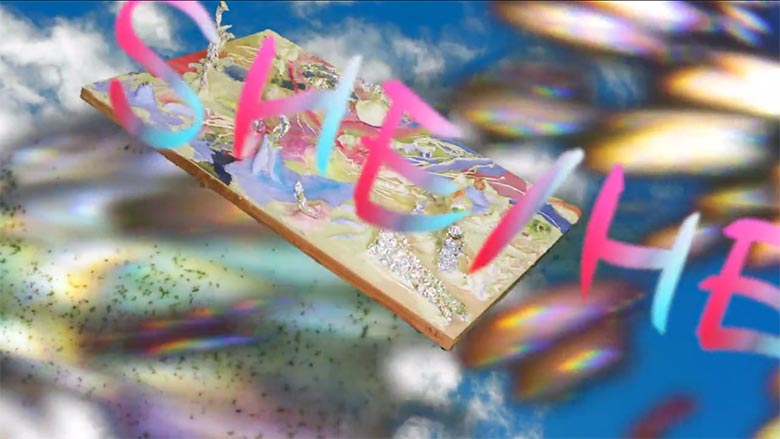
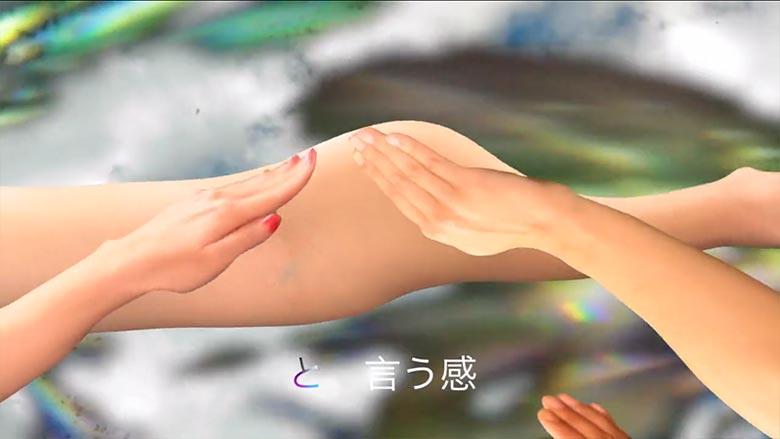
Dustin Wong & Takako Minekawa Tour Dates
Nov. 7th – Northfiled, MN – The Cave at Carleton College w/ William Tyler
Nov. 8th – Chicago, IL – The Hideout
Nov. 9th – Detroit, MI – MOCA Detroit
Nov. 10th – Toronto, ON – Handlebar
Nov. 11th – Montreal, QC – Casa Del Popolo
Nov. 12th – Pawtucket, RI – Machines With Magnets
Nov. 13th – Princeton, NJ – Terrace Club
Nov. 14th – Brooklyn, NY – Palisades
Nov. 15th – New York, NY – Cake Shop
Nov. 16th – Philadelphia, PA – Johnny Brenda’s
Nov. 17th – Baltimore, MD – Floristree
Nov. 19th – Durham, NC – The Pinhook
Nov. 20th – Atlanta, GA – 529
Nov. 21st – Tallahassee, FL – Club Downunder
Nov. 24th – Austin, TX – Mohawk
Nov. 26th – Tempe, AZ – 51 West
Nov. 28th – Los Angeles, CA – Club Los Globos
Nov. 29th – San Francisco, CA – Hemlock Tavern
Dec. 1st – Portland, OR – Mississippi Studios
Dec. 3rd – Seattle, WA – Sunset Tavern
Dec. 4th – Boise, ID – The Crux
Dec. 6th – Denver, CO – Lost Lake Lounge
How did you come to work together on the music video, and how much did you
exchange ideas throughout the process?
I’ve been working on videos whenever I have the chance, especially when I make records. I try to use those as a jumping board to work on a new video. When Takako and I started to collaborate, I thought it would be great to join forces. Our first video was very simple; we tried to make it in an intuitive way as much as possible. We didn’t really know what the video is going to be about until we are done with it. We might have had certain ideas, like, “Let’s try using a green screen,” or, “Let’s try to make it look like computer graphics without using computer graphics.” We talked about the process once things start forming, in the editing process, and the editing process was very much like the process of painting, additive and intuitive.
The process of making a music video after creating a song is a big project, but it’s also a lot of fun. Even when Dustin goes solo, he makes them himself. We want to create an image of our music on our own, with our own ideas and skillset. When Dustin comes up with an idea in his head, we take it from there as a team and make it bigger. (When we are together, we talk about all kinds of things, listen to music, watch videos, and share.) Sharing and cooperation. Instinct and experimentation. I love that time with Dustin.
What similarities and differences are there between the way you collaborate visually and musically?
There is a very non-verbal approach with music; we just sit and jam. Since music is sound and talking is sound, playing the music and jamming are already like talking about the music. Once the musical ideas are done, then we can start talking about it. But with visual work, especially videos, it’s a much longer process; it’s not as immediate as music, so we do have to talk about it a little bit before we begin, a concept of some sort. We don’t really have to stick to it; it’s just a way to get us going. In music it’s all based around improvisation and refining those moments to become songs.
When we first started collaborating, we thought about how each of us could still break out sounds in a way that is free and simple. That’s how we completed the set we have now. That is our spaceship. When we make sounds, it’s a pure jam conversation. When the song comes together, that’s when the meaning and scenery rises to the surface. Filming requires conversation, but in the end, when it’s finished and you can see the whole thing, I think the
sound and images resemble one another. Recently, we filmed a scene together in macro, of pouring oil, soda, and paint into a small bowl. That was an improvisational experimental jam. It was very similar to when we make music.
What are the song’s themes and lyrical ideas? Do they tie in with the visuals at all?
At first Takako was just making “tuu tuu” sounds. During the recording process, we decided that it would be better to add lyrics. I love how she incorporated her ideas onto the song; from the first line of the song, it’s implied that we are flying. Flying over a desert via feeling, consciousness, and physics, she uses the phonetic sound Ka N to jump around [through] ideas [with] puns. You can apply different words onto that sound, feeling, organ, to see, etc.
We were really excited when we made this song; it was like a new energy had been born! We didn’t have lyrics at first, but one day, when we wanted to put some words together, the phrase “visual physics” came up. Since I was little, I used to think a lot about the particles that exist between air and light. I thought that the origin of the universe — us and everything that exists, up to quantum physics, things that was thought we can’t see — that all of it exists and can be seen and felt. It makes me feel like when we express our feelings with visual things (using emoticons and text to dissect them) instead of spoken words and letters, everything and lots of things become heavier coming out. It’s all the same water. Discrimination, wars, gender issues… girlfriends, boyfriends, looking, feeling. A prism collects light, and then diffuses light. We are the same light, and we all shine in different ways.
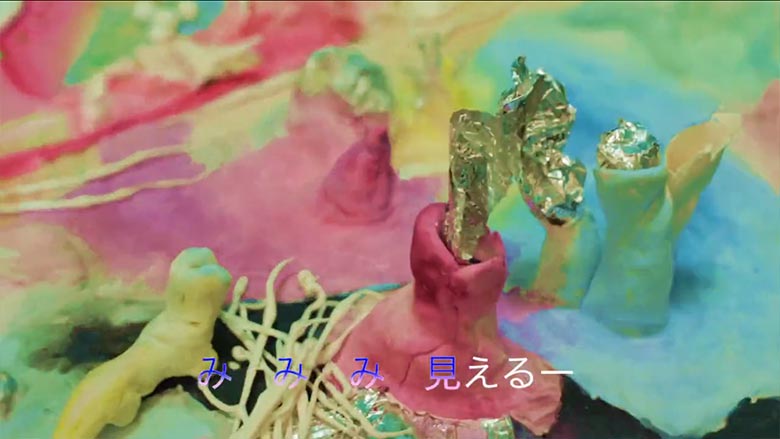
Can you tell me a bit about the piece of art on the wooden board? What does that represent, and how was it created?
We were actually making this diorama while we were recording. Takako bought a big wooden board from the arts and craft store; we started painting on it, adding aluminum foil paper mache. I think we were trying to create a world. Strange creatures, a Venus of Willendorf, a UFO breast, Easter Island faces… The diorama kind of became the idea for the whole record. By creating a world intuitively together, by combining our imagination without compromise, we made a strange place. The mind is a strange place, sometimes beautiful, volatile and whimsical you know?
One day, we started to draw pictures on a big board we had. As the paint grew in layers, we started to make shapes in clay on top of it, and a strange sort of world took shape. We made little white beings, a well-rounded goddess, and even a UFO breast was born! I think it was in the middle of when we were making the album, but when we made the board, I started to be able to see the world inside the album… including the title SAVAGE
IMAGINATION. I think that board symbolizes the album as a whole.
How long did the music video take to make and what techniques were used? Did you have any particular inspirations when making it?
It took about 2 to 3 months to make; my laptop is pretty slow so the rendering was snail speed. We were pretty fascinated by how people were using CG these days; there is this new sense of appreciation for realism or hyperrealism. Still lives are interesting now, now that we have new objects to display like smartphones and cracked screens. We wanted to get that objective distance by using real objects that actually exist. So we took things like rain sticks, plastic figurines of Ganesh, power sockets, foil, anything really! We put them on a turntable with a green screen background, and we looped those objects so it looks like they are spinning constantly. Gifs were a great hint for that too. I think the idea of loops have been utilized more and more in different ways. Ableton uses loops as components; you are dealing with multiple loops, and now we are seeing people use multiple gifs, — essentially visual loops — and have them interact with each other. Just contexts over contexts. The language is changing; it’s becoming more complex, and at the same time simpler and hieroglyphic, and everyone is becoming literate in cryptic communication.
I think “She He See Feel” took about 2-3 months to complete. We thought, “Why don’t we try composing a video using a green screen?” We were initially interested in the effect of using CG, and also why people are enchanted by the simultaneously smooth and rough result of it. That’s also really interesting. It’s an intuitive and impromptu choice of yours. The light in a prism is very organic, but the CG effects attempt to visually recreate that color and recompose the colors of my face.
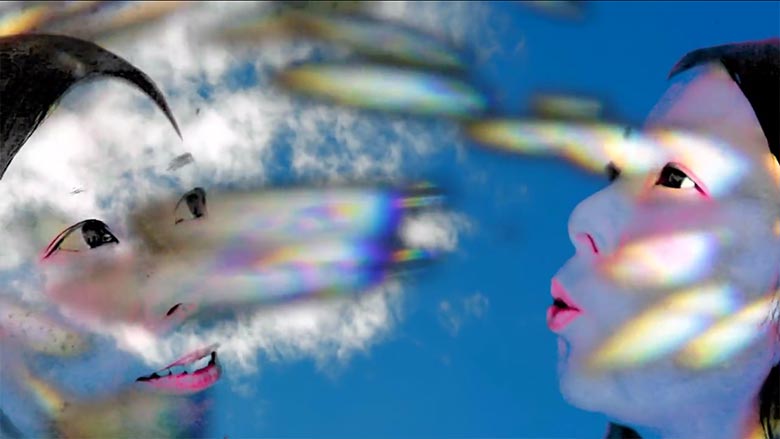
Cibo Matto also just released a music video, and though they are stylistically a bit different, your music video has a similar “feel”. Japanese music can be accompanied by a lot of different aesthetics, but this type of look and feel certainly recurring in Japanese media, with bright colors and general cutesiness. Why do you think Japanese audiences and artists resonate with this type of look? What draws you to it, in particular?
It might have to do with the very defined gender system; men are men and women are women here, on the surface. That surface depth is quite deep here. Like a surface of the screen, depending on the information that perception is receiving, the potential can be close to infinite. Tokyo is a very tight city; you rarely see the horizon, unless you are up on a tall high rise building. When you are looking at a city from 47th floor of a high rise building, the city is flat, as flat as when you are on the ground staring at a wall. But when you look closer, you see [ants] crawling between the bricks, a car driving through an alleyway, the huge video screens blaring out advertisement that you don’t want to hear, girls acting Kawaii because they are expected and they can also exploit that behavior for their own advantages… the patriarchal system empowers the men and neuters them at the same time. Japan is a living contradiction: beautiful, painful, trivial and fascinating, through the crevices of these different aspects strange flowers bloom.
Japanese people love cute things, and that sometimes exists in the center of our sensibilities and expression. And I think a lot of time the Japanese people themselves emphasize that cuteness. Because it was made by a Japanese person or because it’s from Japan, sometimes my former solo work or our work is called “cute”, but cuteness isn’t a deliberate part of our artistic conscious. More than that we tend to focus on the “interesting” or “a little weird.”
Why do the Japanese people love cute things? Most Japanese people like soft foods. The bread in Japanese bakeries is fluffy in texture, and you see bread for sale described with emphasis around it’s fluffiness. Also, we love noodles. For rice too, it’s ladled into bowls then formed into a round shape. If you imagine it like that, the shape of Japan’s “mascots” will form in front of you. (Hello Kitty and Sanrio is the beginning of it.) I think the cuteness that comes from liking soft foods naturally gets absorbed into the Japanese DNA. Yukimi daifuku (mochi ice cream) is popular with people outside of Japan, but that white, round, sweet form is a symbol of the Japanese. Even in Japan’s colorfulness, I feel that sense of whiteness and roundness gets mixed in and remains untouched in it. There might a charm to that, but honestly I think it’s a big issue. The concept of feminine women and masculine men is still deep-rooted in this country.
Ω



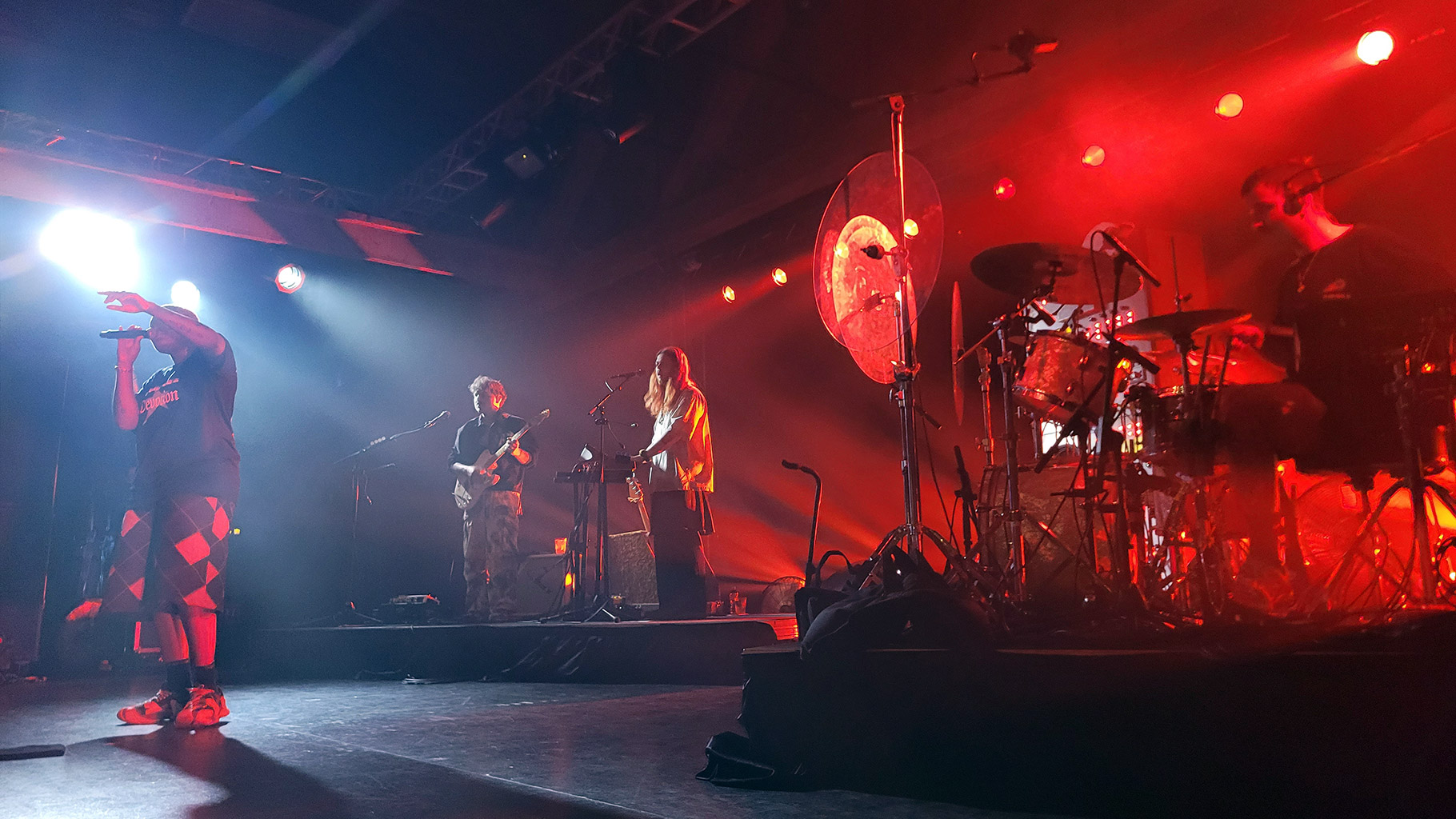


[…] “She He See Feel” is just as bizarre visually – with an excellent new interview from Redefine Magazine talking about the video, song, and Japanese aeshetics in general. It’s a great read, and one […]